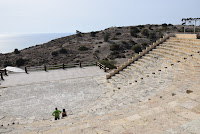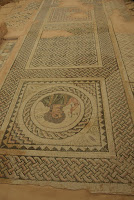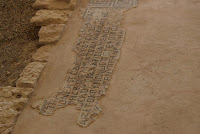(...)
We then headed towards the once large Centre of cultural, political and religious activities in the days of the Ptolomies and the Romans - Kourion. Founded in the 12th century B.C. by Mycenaean Greeks, it was home to the Sanctuary of Apollo and later the seat of a Christian Bishop.
We walked around the site and more specifically the probable private-elite House of Eustolios, originally thought to be a palace with its 30 rooms arranged around a colonnaded courtyard with mosaic floors, amongst which the one depicting Ktissis, a woman holding an architect's ruler, which was the one that most caught our attention for obvious reasons of meticulous artistry, though the ones around the peristyle courtyard and reception areas had a similar impact and looked equally astounding.



















Before leaving the site we visited the Roman Theatre, said to have been buil in the 2nd century B.C. enjoying a magnificent location overlooking the sea.


We didn't further stroll around the site because we were slightly delayed in terms of the programmed schedule and we would still have to make it to Pafos early enough, so as to be able to especially admire the mosaics of Kato Pafos' four villas before the sun went down.






















No comments:
Post a Comment